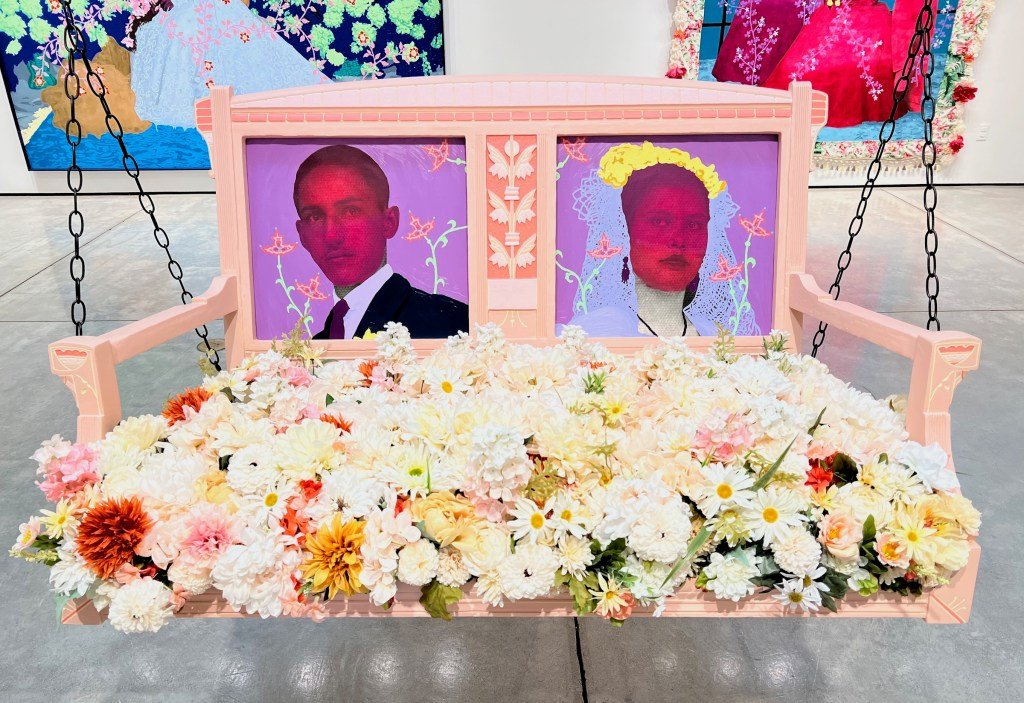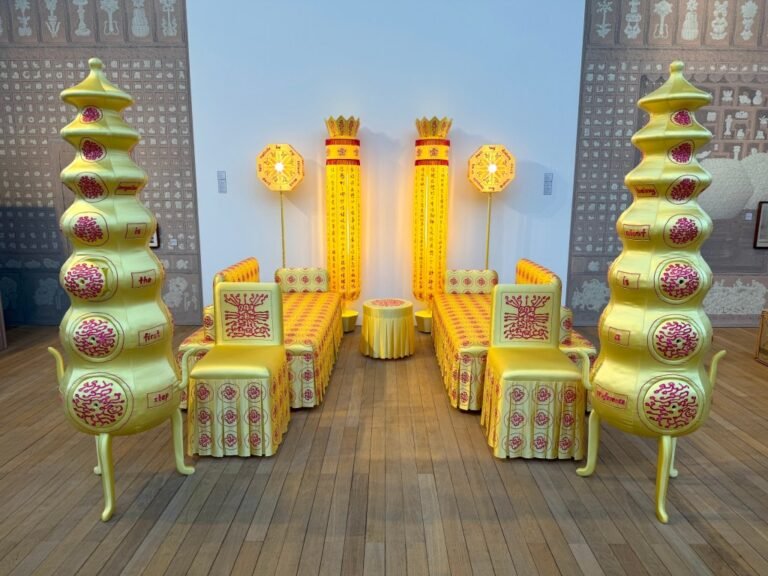

SAN LUIS OBISPO, Calif. — At the center of Daisy Patton’s Before These Witnesses hangs a double swing festooned with fabric flowers. Fashioned from a decrepit sofa the artist found on Craigslist, it frames vintage wedding photos of an anonymous Venezuelan couple that the artist has enlarged, printed on canvas, and embellished with bold acrylic paints. The result is “Untitled (Color Fade Wedding Couple with Purple Background and Green Vines)” (2024), an enchanted assemblage which projects both joy and grief. Visitors to the exhibition — which focuses on the theme of weddings — will feel its emotional impact as they enter the gallery.
One of the show’s large wall pieces presents an undated queer parlor wedding, edged by an elaborate fabric frame that incorporates embroidery, fringe, floral buttons, and fabric flowers. “Untitled (Wedding Party in Parlor Celebration with White Vines and Green Flowers)” (2024) fuses a feminist application of craft and an interest in Postmodern theory. In particular, Patton embraces critic Roland Barthes’s notion of the punctum: an aspect or detail of a photograph that holds our gaze without condescending to mere meaning or beauty. In the faces of the wedding guests, originally captured by a camera and resurrected by Patton’s attentive artistic process, we feel them looking back at us across time and culture, offering themselves to be seen.

Patton’s intimate connection with the specters in her source photographs leads to the intuitive artistic decisions she makes when hand-painting them. The Bulgarian couple who appear in one piece get different treatments: His face appears in black and white, while hers is veiled in pale blue. His suit is embellished with floral patterns while her gowned figure is shrouded in a gradient of vibrant blue. An African-American couple from Indiana is presented in aqua (her) and orange (him) as they lean forward in front of purple blinds and pink wallpaper.
Throughout Before These Witnesses, it feels like Patton is updating and personalizing Andy Warhol’s technique of silkscreening dazzling colors across black-and-white photos to transform their impact. The difference is that Warhol reveled in the cool mechanical aspects of his process, while Patton emphasizes hand-painted details and decorations that remind us of her warm engagement with her subjects.
The sense of inclusion offered by Patton’s dazzling works broadcasts her commitment to empathy and understanding. Her photo-based works of the past decade, which have dealt with family, identity, and mortality, have all been rooted in her quest to bridge the personal and the universal. Patton’s interest in creating a spiritual experience that fuses imagery and decoration is at the heart of the show’s unifying message.

Before These Witnesses continues at the Harold J. Miossi Art Gallery at Cuesta College (CA-1, San Luis Obispo, California) through March 14. The exhibition was curated by Gallery Coordinator Tim Stark.


